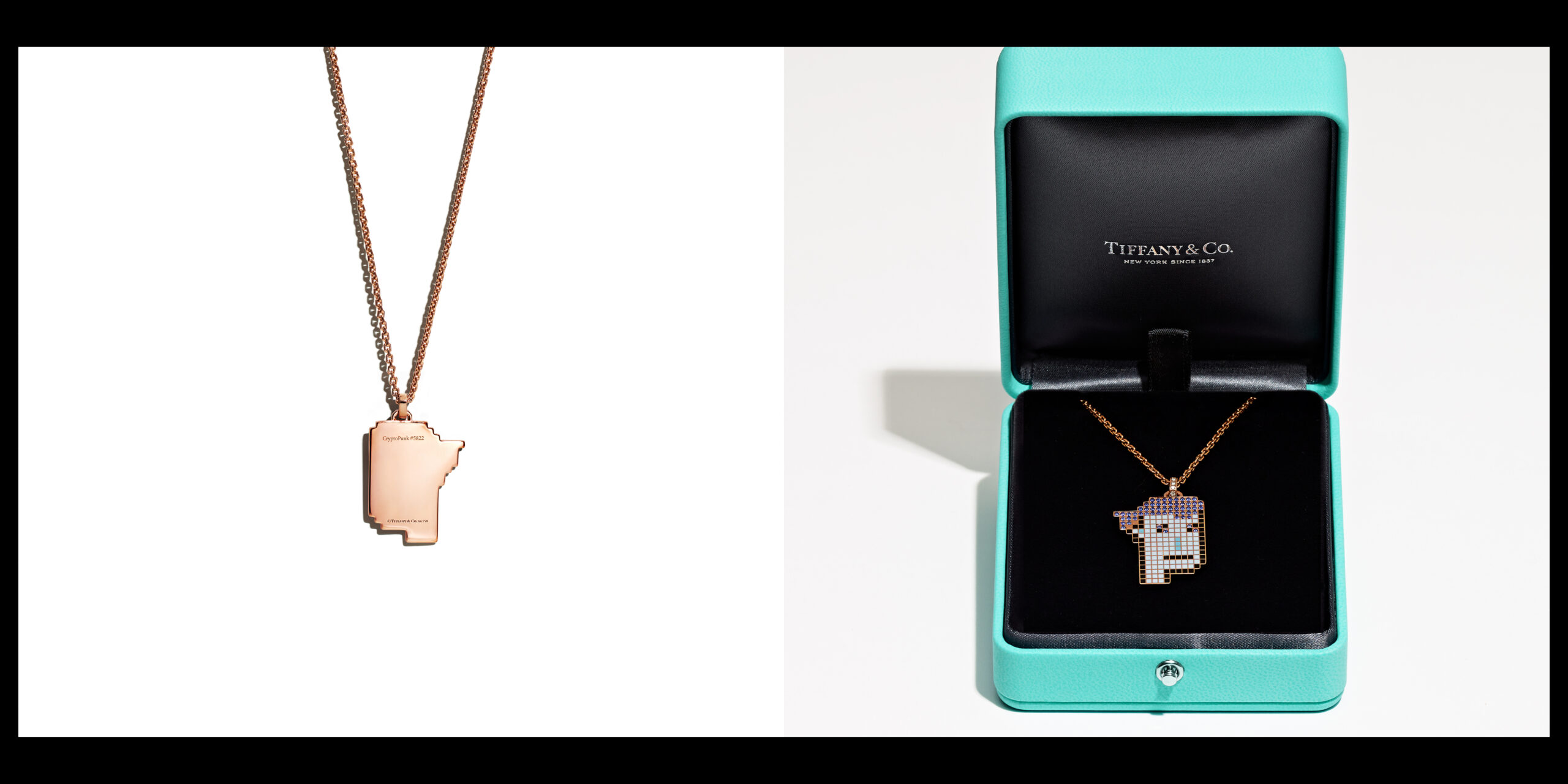Harnessing the hype surrounding NFTs, Fashion brands are enticing consumers to buy corresponding physical products.
Popular fashion brands, including Tiffany, Prada, and Nike, are allowing exclusive access to physical products using NFTs — an experience only possible with recent innovations in consumer technology.
An NFT, or a “non-fungible token,” is a unique digital identifier that cannot be copied. It’s recorded in the blockchain and used to certify authenticity and ownership. Commonly purchased NFTs come in the form of images, art, or music. Fashion brands have been taking advantage of the hype around NFTS and selling virtual versions of clothing. What’s new, however, is that brands are now allowing consumers to use said digital purchases to redeem physical products.
Tiffany & Co. recently announced the launch of a custom jewelry program exclusive to owners of their NFT crypto punk, centered around what the company calls “NFTiffs.” Tiffany’s NFTiffs are 250 digital passes which can be redeemed for a physical pendant and an NFT resembling the physical item to add to the customer’s online collection. To own one of these exclusive pendants, crypto punk holders need to buy an NFTiff, which will cost them 30 ETH, a form of cryptocurrency, which translates to about $50,000.
GAP also launched its first NFT collection earlier this year. The brand collaborated with Brandon Sines, the artist behind the Frank Ape cartoon, for a collection hosted on the Tezos blockchain, which uses an energy-efficient algorithm. For a few hundred dollars, consumers could purchase a physical sweatshirt, which included digital art by Sines, and a physical Gap x Frank Ape sweatshirt.
Meanwhile, last year Prada announced the latest installment in their “Timecapsule” NFT collection. Each NFT drop is linked to a limited edition physical product. Similarly, Dolce & Gabbana introduced their “Realta Parallela” collection, which includes digital NFT hoodies, T-shirts, and sneakers and encourages buyers to get a matching physical set for the real world.
Another example of crypto-first brands allowing consumers to “forge” physical products from virtual tokens was in July, when Nike and Web3 Fashion and collectible studio RTFKT Studios released the RTFKT x Nike AR Hoodie Set. This was available for purchase digitally and in real life.
This modern tool for connection offers a new way for fashion brands to create exciting new benefits for their customers. It has also encouraged hype culture, AKA audiences of engaged consumers eagerly waiting for the next drop or digital perk.
Many well-known patrons of luxury fashion say that this new change in marketing and consumer relations is the future of luxury goods. It is also worth noting that this change in fashion retailing will be influential in accelerating the mainstreaming of NFTs.
However, several issues need to be resolved before this new form of online shopping becomes the future of fashion transactions. The additional steps added to the buying process can be clunky and complicated for those not yet fully versed in the technology. Additionally, the user experience involved in buying NFTs remains full of bugs. Reportedly, hours-long wait times plagued the July drop of the NFT hoodies from RTFKT, leading the company to issue a public apology.
There is also the issue of sustainability. NFTs and digital clothing cut down water usage and reliance on supply chains, but if they’re accompanied by physical products, this is null. In addition, all NFT transactions still add to the fashion industry’s already massive carbon footprint due to increased technological energy usage.
As such, for now at least, the model is expected to be used primarily for limited-edition drops or especially desirable items that aren’t easy to obtain.
Homepage image courtesy of Unsplash, inside image courtesy of Tiffany.





